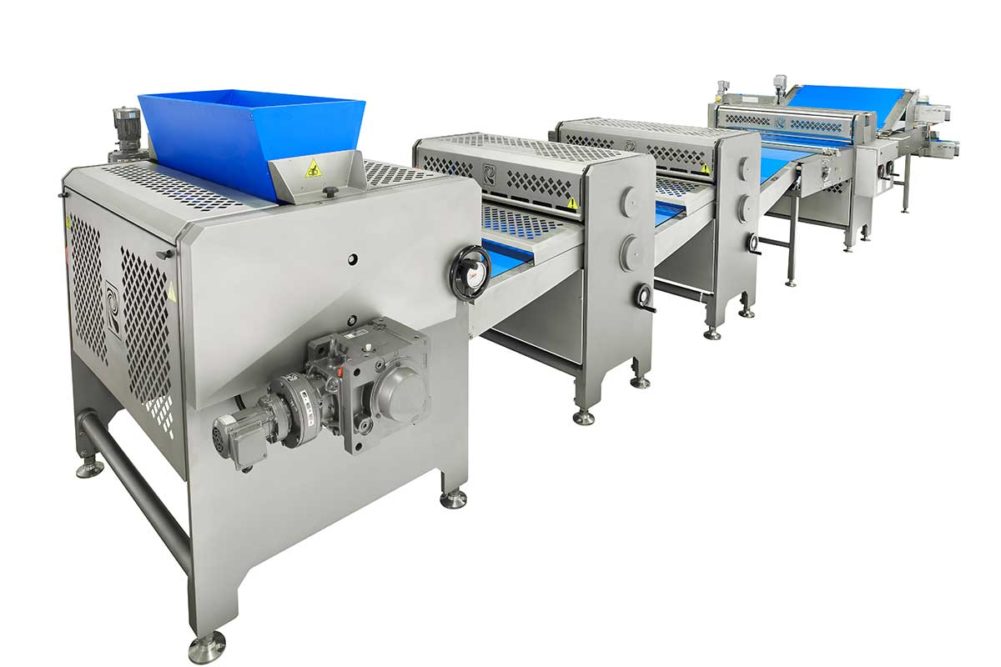Transitions are always an opportunity for inconsistencies or damage to be introduced during bakery production. As cracker dough comes off the gauge rolls, it’s critical it doesn’t stick to the rollers and releases smoothly onto the belt. As cracker formulations have become more varied, the traditional roll speed differentials don’t always get that job done.
Traditionally, top and bottom gauge rollers on cracker lines have been connected so that if the speed of one roller was adjusted, the other would also change. The bottom roll would run about 5% faster than the top to release the dough onto the belt without issue.
“That worked very well for many years, and it still does for standard wheat-based doughs,” said Ken Zvoncheck, director of process technology, Reading Bakery Systems (RBS). “But as we get away from wheat-based doughs and get into gluten-free or hybrid doughs, that 5% doesn’t necessarily hold true anymore.”
Independent motors and drives on gauge rolls allow operators to change the differentials with the push of a touch screen. This provides bakers the flexibility to run a lot of different cracker doughs on one line with an easy, automated changeover.
“Every dough has that sweet spot where it will sheet very nicely with a certain speed differential,” he explained. “When you’re running a smooth sheet that comes off the bottom roll smoothly, the whole cracker integrity is going to be much improved. The smoothness of the cracker as it bakes in the oven will be better — just everything about that will be better.”
Another transition that can introduce inconsistencies is the transfer between the rotary cutter and separation conveyor. If the dough is developed and sheeted properly, it can still come out misshapen if it sticks to the belt. As the rotary cutter divides the dough into its final pieces, it’s pressed onto the belt, causing it to stick. As long as the crackers release to the separation belt without issue, there will be no deformities in the final shape. The tolerance of the gap between the two conveyors and their speed are critical to getting this handoff right, Mr. Zvoncheck said.
This article is an excerpt from the November 2020 issue of Baking & Snack. To read the entire feature on cracker technology, click here.






